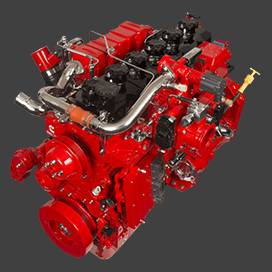Nov . 09, 2024 00:10 Back to list
Guide to Removing Brake Drums Effectively for Vehicle Maintenance and Repair
Brake Drum Removal A Comprehensive Guide
Brake drums are a crucial component of a vehicle's braking system, particularly in older cars that utilize drum brakes instead of disc brakes. If you are experiencing issues with your braking system, such as unusual noises, reduced stopping power, or vibrations, it may be time to inspect and potentially replace your brake drums. This article provides a comprehensive guide to brake drum removal, helping you navigate the process with ease.
Tools and Materials Needed
Before starting the brake drum removal process, gather the following tools and materials
1. Jack and Jack Stands To lift the vehicle securely. 2. Lug Wrench To remove the wheel nuts. 3. Brake Drum Puller A specialized tool to assist with removing stubborn brake drums. 4. Cotter Pins or Retaining Clips Depending on your vehicle’s braking system. 5. Screwdriver Flathead and Phillips for various tasks. 6. Hammer For tapping and loosening parts. 7. Brake Cleaner To clean components after removal. 8. Safety Goggles and Gloves For personal protection.
Step-by-Step Process
Step 1 Prepare the Vehicle
1. Ensure Safety Park the vehicle on a flat, stable surface and engage the parking brake. 2. Remove the Wheel Using a lug wrench, loosen the lug nuts slightly while the wheel is still on the ground. Then, jack up the vehicle and place it on jack stands. Finally, fully remove the lug nuts and take off the wheel.
Step 2 Accessing the Brake Drum
1. Examine the Brake Assembly Once the wheel is removed, inspect the brake assembly. Look for any signs of damage or wear on components such as shoes and springs. 2. Remove the Brake Shoes Depending on your vehicle's setup, you may need to release the tension on the springs holding the brake shoes in place. Use the screwdriver to carefully remove any retaining clips or cotter pins.
brake drum removal

Step 3 Remove the Brake Drum
1. Inspect the Drum Before proceeding, check for any visible retaining screws holding the drum in place. If these screws exist, remove them using the appropriate screwdriver. 2. Using a Brake Drum Puller If the drum does not come off easily, attach the brake drum puller according to the manufacturer's instructions. This tool provides the leverage necessary to pull off stubborn drums without damaging the surrounding components. 3. Light Tapping If the drum remains stuck, use a hammer to gently tap around the drum's edge to break loose any rust or corrosion. Avoid hitting too hard, as this may damage the drum. 4. Remove the Drum With the puller or tapping method, the drum should start to loosen. Carefully slide it off the hub, taking care not to damage any attached parts.
Step 4 Inspection and Cleaning
1. Inspect the Drum Examine the inside of the drum for wear, scoring, or cracks. A worn drum may need to be resurfaced or replaced entirely. 2. Clean the Components Use brake cleaner to remove dust and debris from the drum and brake assembly. Allow the components to dry completely before reassembly.
Step 5 Reassembly
1. Install New Parts (if needed) If you are replacing the brake drum or any other components, follow the manufacturer’s instructions for proper installation. 2. Reattach the Brake Shoes Position the brake shoes back into place, re-engaging any springs or clips you removed earlier. 3. Reattach the Brake Drum Align the drum over the hub and slide it into place. If applicable, secure any retaining screws.
Step 6 Reinstall the Wheel
1. Put the Wheel Back On Replace the wheel and hand-tighten the lug nuts. 2. Lower the Vehicle Carefully lower the vehicle back to the ground and then fully tighten the lug nuts using the lug wrench.
Conclusion
Removing a brake drum can seem challenging at first, but with the right tools and a detailed plan, it can be accomplished safely and effectively. Always remember to prioritize safety and consult your vehicle’s manual for any specific instructions or precautions unique to your model. If in doubt, don’t hesitate to seek professional assistance. Proper maintenance of your braking system is vital for the safety and performance of your vehicle.
-
Scania Brake Drums: OEM Quality for Optimal Safety & Durability
NewsAug.16,2025
-
R.V.I: Advanced Remote Visual Inspection for Precision
NewsAug.15,2025
-
Discover HYUNDA: Innovative Vehicles, Equipment & Solutions
NewsAug.14,2025
-
R.V.I: Unlock Advanced Insights & Real-time Performance
NewsAug.13,2025
-
Kamaz Brake Drum: Durable & Reliable for Heavy Duty Trucks
NewsAug.12,2025
-
Heavy Duty Iveco Brake Drum - Premium Quality & Safety
NewsAug.11,2025
